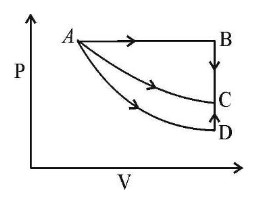Ncert Solutions Chemistry Class 11th
Get insights from 2k questions on Ncert Solutions Chemistry Class 11th, answered by students, alumni, and experts. You may also ask and answer any question you like about Ncert Solutions Chemistry Class 11th
Follow Ask QuestionQuestions
Discussions
Active Users
Followers
New answer posted
2 months agoContributor-Level 10
InA-O-H, if EN of ' A' is 2.1 then it will be neutral, as XA-X0=X0-XH. (where X is EN)
New answer posted
2 months agoContributor-Level 10
q = 0, w = 0,
As volume changes, temperature must change to maintain constant internal energy.
New answer posted
2 months agoContributor-Level 10
The blue color of the solution is due to the ammoniated electron which absorbs energy in infrared region of light
Taking an Exam? Selecting a College?
Get authentic answers from experts, students and alumni that you won't find anywhere else
Sign Up on ShikshaOn Shiksha, get access to
- 65k Colleges
- 1.2k Exams
- 679k Reviews
- 1800k Answers



